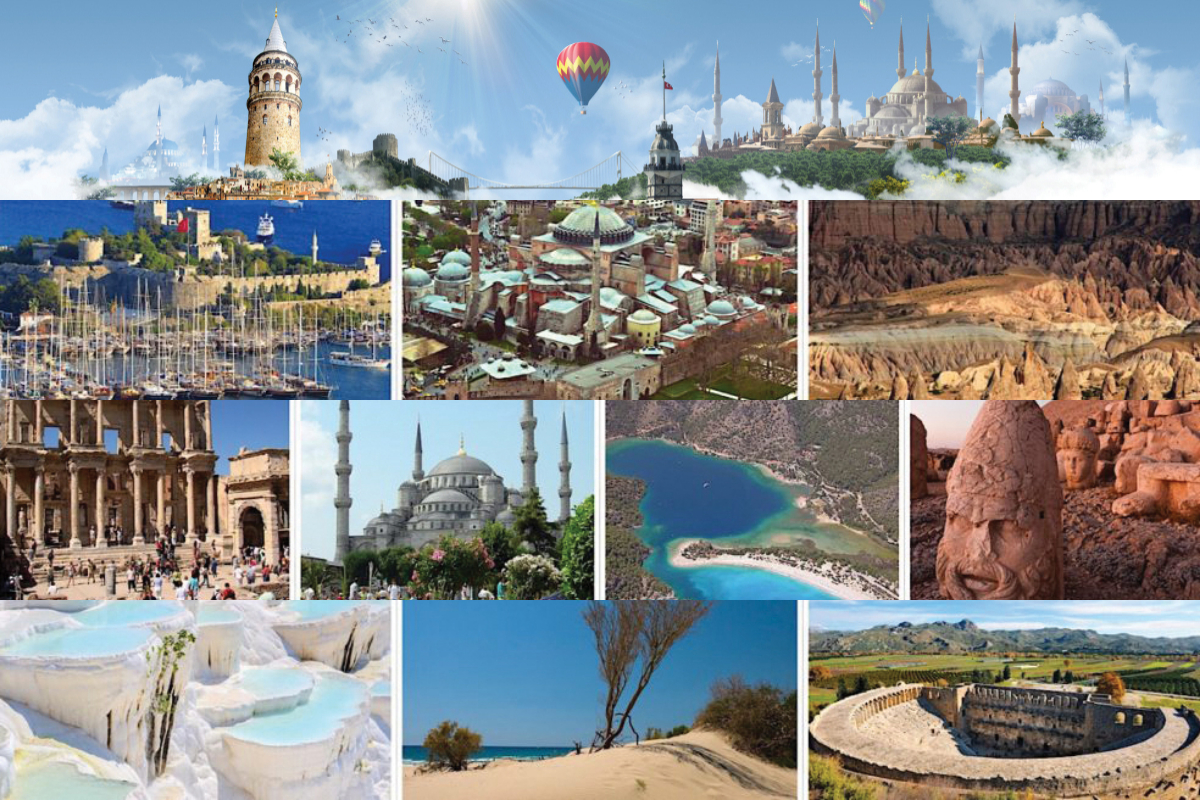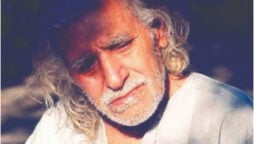
Of mosques and mausoleums: Türkiye’s unparalleled beauty
Türkiye, a country that embodies history, art, and culture, has become a favourite place for travellers across the globe, especially Pakistanis
Travelling before the onset of the pandemic was a much more fun experience as one could freely plan one’s own trips. However, the onset of Covid-19 has changed tourism forever. While my daughter’s school was closed indefinitely, I decided to take a vacation with one of my best friends and travelled to Türkiye, which can safely be described as one of the most memorable trips I’ve ever been on.
Carrying light luggage, but heavy on emotions, we landed in Istanbul. The city is immensely rich in culture, history and architecture. We had booked a group tour for 12 days, covering Cappadocia, Pamukkale, Canakkale, Izmir, Sirince, Konya, and Ankara. So our itinerary was as comprehensive as one would want it to be.
Starting from Istanbul, – which lies in both Europe and Asia – the city is a blend of both those worlds, geographically and culturally. The heart of the city lies at Taksim Square, where we found all the touristy places at a walking distance, including the Blue Mosque, Hagia Sophia, and Topkapi Palace, surrounded by quaint, boutique hotels with courteous staff.

We first decided to explore the city by ourselves, starting our day by offering prayers at the Blue Mosque, which exuded the serenity and modernity of the Ottoman Empire. According to folklore, the architect of this mosque misheard the Sultan’s request for “altın minareler” (gold minarets) as “altı minare” (six minarets), which was a unique feature to the Great Mosque of Makkah at the time. Boasting of many windows and lamps, the mosque was generously lit, hence enhancing its beauty, making me feel that I was in an otherworldly space. Now a museum, it was the largest building of its time, and is said to have changed the history of architecture. Particularly famous for its massive dome, it also houses a bronze-plate-covered column with a hole in the middle, which goes by several names: the wishing column, weeping column, sweating column or perspiring column. Legend dictates that people’s wishes will come true if their thumb gets wet when they make their wishes by rotating their thumb in a clockwise motion inside the hole. My thumb became wet with sweat, so I wonder if my wish will come true.

Our next stop was the Hagia Sophia, a Greek Orthodox Christian patriarchal cathedral of the mid-15th century which was later converted into an Ottoman mosque. This masterpiece of architecture features elements of both a mosque and a church. The last stop of the day was Topkapi Palace – an enormous palace with plenty of jewellery, weapons and clothes on display. The outside of the palace was dotted with various people dressed in the traditional costumes of the Ottoman era. After a tiring flight and the excitement of visiting as many places as one could on foot, we chose to relax at a hamam, the traditional Turkish spa.
The next day, brimming with excitement, we strolled around the Galata Bridge, took a ferry ride from the Galata Bridge to the Bosphorous Bridge and back, all the while absorbing the picturesque view of Europe from Asia and Asia from Europe. The Bascilia Cistern is another impressive civil engineering wonder which deserves a quick visit. We also spent time in Istanbul’s iconic Grand Bazaar, which in many ways is like Delhi’s Palika Bazaar. Haggling there was so much fun and I loved shopping there for souvenirs to take home for the family.

Our group tour began with Cappadocia, the city of caves. A place of exceptional natural wonders and fairy chimneys, Cappadocia is the result of ancient volcanoes that have turned into caves over time. People there have carved out houses, hotels, churches and monasteries from the soft rocks of the volcanic deposits. We stayed at one such cave hotel. Our guide scheduled our balloon ride but, given my fear of heights, I was the last person who would want to experiment with this once-in-a-lifetime experience. But I would highly recommend this to everyone as the ride gives you a bird’s eye view of the amazing landscape this region has. The pilot, Mehmet, was able to manoeuvre the hot air balloon very precisely, and though there was some spontaneous turbulence, we felt absolutely safe. Almost all the tour companies launched their balloons at the same time early in the morning, around 6am. The view of the sky peppered with countless balloons is breathtaking in and of itself, whether you take the ride or not. The ride ended with a celebration as Mehmet’s helpers decorated the balloon and basket while enjoying some drinks and cake as the sun rose over the romantic Rose Valley.
The rest of the day was spent exploring some of the 36 mazy underground cities in Cappadocia, among which the Kaymakli Underground City is the widest one. The tunnels here are tall enough for travellers to walk upright. But as we went deeper, the passageways became narrower and lower, so we had to arch our backs to continue walking. For the first time in my life, I thanked God for my short height!
A day’s visit to the Göreme Open-Air Museum is a must, where several rock churches of the Cappadocian Fathers can be found. We were profoundly surprised by the number of cats here, and we saw them in almost every ruin. They seemed as though they were the tiny guardians of this ancient city.

While we took our time to get over the thrill of the balloon ride, the tour guide took us to the Cotton Castle, Pamukkale. The name is derived from the very white calcium carbonate cliffs nearby. We realised that the song Tu Jaane Na from the movie Ajab Prem ki Ghazab Kahani had been shot here. An enigma unto itself, visitors to Pamukkale deserve a dip in the hot spring water, which is supposed to heal every bodily pain. A well-preserved area, it is a national park that also houses a Roman theatre. There are also some ruins just behind the travertines. Do remember to be in your bathing suit when you enter this area as a dip in the Cleopatra Pool is a must if you want eternal beauty. You should also be prepared to walk around the ruins in Hierapolis. Like any Greco-Roman city, it boasts of a necropolis, temples, baths, agoras, and odeons. Spending a night in Pamukkale may not be a bad idea, however, we avoided it as we had already incorporated our visit to Ephesus – another set of ruins very close to Pamukkale – during the day. We also visited the extraordinary Library of Celsus, a landmark of Ephesus. According to legend, there was a “secret passage” inside the library that was connected to a brothel.
Five days into our tour was more than enough to make us realise that Türkiye has a rather incredible historical and cultural richness. We also visited the village of Sirince. Popular for its exquisite fruit wines, the village is lined with olive trees, fruit trees and vines. After an improvised picnic, we moved to Konya, the home of Sufism and, in particular, the order of the Whirling Dervishes.
We visited the Mevlana Museum in Konya, a mausoleum named after a 13th century Persian poet and Islamic scholar who created the Mevlevi Order dance. Inside the monastery, which houses the tombs of Mevlana, his immediate relatives and other distinguished Dervishes, we found most pilgrims in tears, overcome with the emotion of visiting such a holy place. The area housed numerous exquisitely decorated tombs, and adjoining this was a room full of artefacts that were equally stunning. Even if you understand little of the religious significance of this place, it’s easy to appreciate the artistry of the items there.
While Cappadocia and Istanbul are seen as the country’s crowning jewels, Türkiye’s capital Ankara is a hidden gem waiting to be discovered. Although moderately modernised, Ankara has managed to stay true to its historical and cultural essence as it is filled with tradition in every nook and corner. A full day is the ideal amount of time needed to enjoy everything that Ankara has to offer in both the old section called Ulus, and the new section called Yenisehir. The most important tourist attraction is Anitkabir (Mustafa Kemal Ataturk’s mausoleum), which is located in the Maltepe district of the city. A monumental tomb for the founder of the Turkish Republic Kemal Ataturk, there is also a small museum which contains his personal items. There is also the Hisar or the Citadel, which is situated at the hilltop fortress in one of the oldest parts of Ankara. With massive walls and passages to explore, the top of the citadel offers a gorgeous view of the Turkish village.
Türkiye epitomises not only the confluence of East and West, but also tradition and modernity. One has to experience it to truly feel the pulse of the land. Few countries have made as much of an impact on me as Türkiye did, and I was sad to leave. There were many things we were unable to see and do but, as every traveler knows, it is impossible to completely cover a country in a single trip. I shall be back, and the temptation to visit Bursa and Bodrum, Antalya and Sinop, Van and Şanlıurfa, and dozens of other places in between will have to wait until then.
Catch all the Bold News, Breaking News Event and Latest News Updates on The BOL News
Download The BOL News App to get the Daily News Update & Live News.












 Read the complete story text.
Read the complete story text. Listen to audio of the story.
Listen to audio of the story.